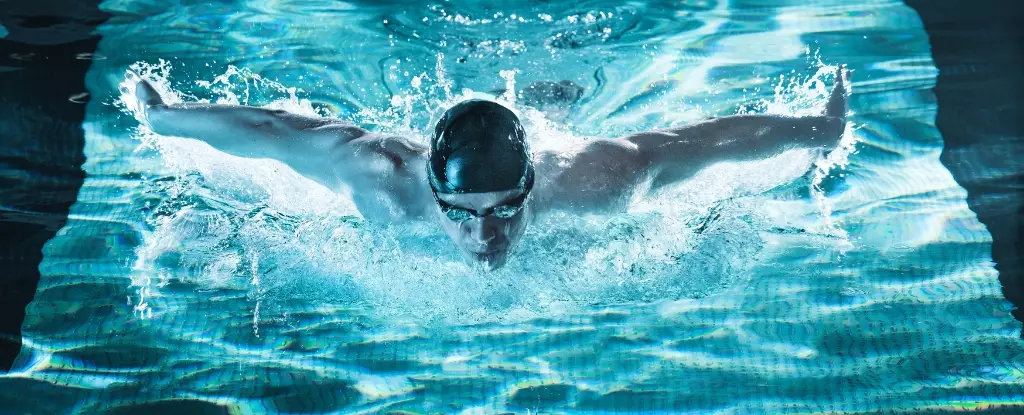Competitive swimmers are constantly seeking ways to gain a competitive edge in the pool. The latest trend at the Paris Olympics is the use of cutting-edge swimsuits that are designed to enhance performance and reduce drag in the water. These suits are said to provide a sense of “weightlessness” and allow swimmers to glide through the water with minimal resistance. However, the effectiveness of these high-tech swimsuits is still a topic of debate among experts in the field.
Top swimmers like Emma McKeon, Caeleb Dressel, and Adam Peaty are endorsing the latest swimsuits from Speedo, believing that these suits will help them shave crucial milliseconds off their race times. These suits use advanced coating technology that was originally developed to protect satellites in space. The goal is to minimize drag in the water, which is the primary factor that hinders speed in swimming. Kevin Netto, a specialist in exercise science, points out that any technology that can reduce drag is considered invaluable in the world of competitive swimming.
The Evolution of Swimsuit Technology
Swimsuit technology has come a long way over the years, evolving from flannel and cotton to permeable materials like nylon and lycra. Brands like Speedo, Arena, Mizuno, and Jaked have been at the forefront of this technological revolution, constantly pushing the boundaries to create faster and more streamlined suits. The controversial full bodysuit worn by swimmers at the 2008 Beijing Olympics was a game-changer, leading to a surge in world records due to its buoyancy and muscle support properties. However, the use of polymer-based suits was eventually banned by World Aquatics in 2010 after being deemed as providing unfair performance advantages.
The Impact of Swimsuit Innovation
While swimsuit technology has undoubtedly played a role in the improvement of swimming performance, its exact impact remains a subject of debate. Research into the effects of high-tech swimsuits has yielded conflicting results, with some studies suggesting a performance boost while others remain skeptical. Factors like diet, training, and natural talent also play a significant role in determining a swimmer’s speed and endurance in the water. Despite the advancements in swimsuit technology, there is no clear consensus on whether these suits significantly improve performance.
In addition to high-tech swimsuits, other innovations like cutting-edge eye-wear have emerged in the world of competitive swimming. These goggles can provide real-time insights on a swimmer’s performance, tracking metrics that can help improve technique and efficiency in the water. While these advancements are not yet permitted at the Olympics, they demonstrate the ongoing quest for innovation in the sport of swimming.
The evolution of swimsuit technology in competitive swimming has been a fascinating journey marked by controversy, innovation, and debate. While high-tech swimsuits have undoubtedly pushed the boundaries of performance enhancement, their true impact remains uncertain. As swimmers continue to seek ways to gain a competitive edge, the future of swimsuit technology in the sport of swimming is sure to be a topic of ongoing discussion and exploration.

Leave a Reply